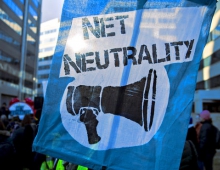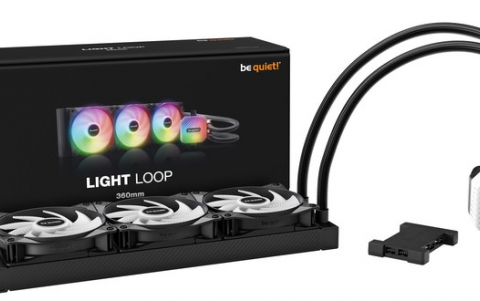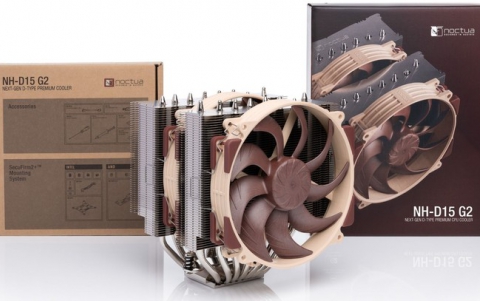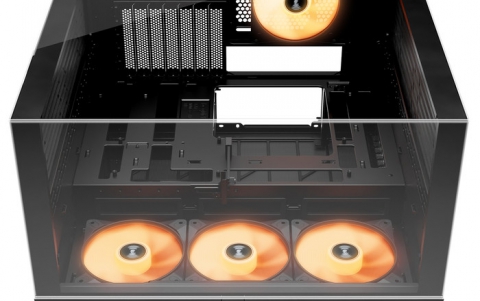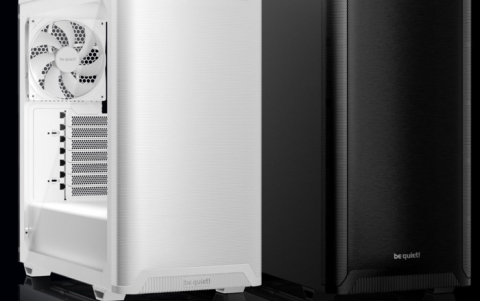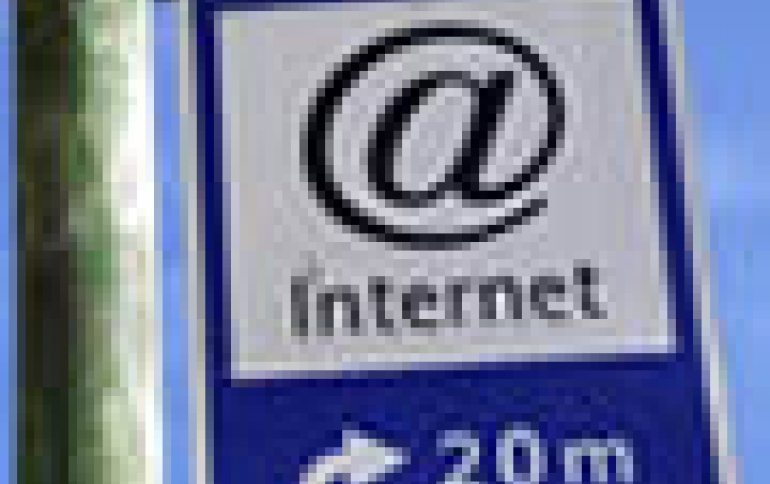
Internet freedom reigns in Amsterdam
Amsterdam has the world's busiest Internet exchange, thanks to nuclear physicists and mathematicians who in the 1980s connected their network needs with the academic belief that knowledge needs to be free.
At a time when the neutrality of the Internet is at stake, and Internet service providers (ISPs) are moving to prioritize their premium traffic, the Amsterdam Internet Exchange is a reminder that the Internet was built on the principle of the unrestricted exchange of ideas and information.
The popularity of the AMS-IX. the official name of the exchange, is the result of a liberal foundation which has created a place where ISPs can do business any way they like.
"'Anything goes unless it's forbidden', was our motto from the beginning. We added a few rules later on, but any unnecessary organizing is being prevented," said Rob Blokzijl from Nikhef, the National Institute for Nuclear Physics and High Energy Physics in the Netherlands.
It shares this spirit with the designers of the Internet who decided that all data packets were created equal, and with Tim Berners-Lee who developed the World Wide Web at the Swiss particle physics lab CERN as a universal and neutral platform.
"The public will demand an open Internet," Berners-Lee said in a recent interview with Reuters.
Indeed, the debate over "net neutrality" is one of the biggest issues facing the Web today on both sides of the Atlantic, pitting big cable and phone companies against Internet powerhouses like Google Inc.
At issue is whether broadband providers should be allowed to create "toll booths" that would charge Internet companies to move content along fast broadband lines, a move critics say would restrict the freedom of the Web.
ASM-IX is a not-for profit structure, just how the Internet itself was conceived. The first Web server outside CERN was running at Nikhef, showing that physicists need collaborative networks because expensive machines are elsewhere.
The center does a good job in concealing its significance as a key Internet hub. A few kilometers from the inland sea, it is situated among the meadows and canals of suburban Amsterdam, on the upper floor of a brick-and-concrete building.
"If the polder floods, we'll keep our feet dry. This floor is above sea level," said Blokzijl.
Keeping the room dry is largely symbolic, as it will hardly impact the performance of the Internet. Amsterdam has one of the 13 root servers, but the Web is designed in such a way that even when one of its important exchanges is taken down, traffic automatically finds a detour around the damaged center.
TOUCH THE INTERNET
The fact that Amsterdam has one of the three root servers outside the United States is not lost on local politicians, including the former Dutch Prime Minister Wim Kok, who have come to this room to "touch the Internet" by placing their palm on the computer's casing. During rush hour, 170 Gigabits of data per second -- the equivalent of over 30 compact disks -- travel through the exchange.
Around 250 Internet providers from around the world are bunched together in AMS-IX. Its closest competitor is the London Internet Exchange LINX.
"More than half of them are large ISPs from abroad. They all come here to get connected to each other. And everyone who puts fiber optic cables in the ground, makes sure their cables surface here," Blokzijl said.
Being close to a root server is a major advantage, because that is where all the world's Web addresses are catalogued. It is where easy-to-remember Web addresses -- for instance: www.reuters.com -- are connected to a string of Internet Protocol numbers which the Internet needs to function.
"One Web page these days can be compiled from dozens of different IP addresses, or even a hundred. Ads, columns, pictures all come different places. If you're close to the root it takes less time to get an answer. If Web pages load slowly, it's because they're waiting for a reply."
Another reason the exchange is a success is that providers can connect their networks directly, so-called peering, to save time and cost. Because so many ISPs are here, the center boasts it is the world's first mobile Internet peering point.
Not all Internet exchanges allow peering.
The birth of AMS-IX is in fact the accidental consequence of Blokzijl's deal -- over a cup of coffee -- to team up with a neighboring center for mathematicians and computer scientists. They bundled their network budgets to buy more network capacity from powerful telecoms monopolies back then.
"It took months to get a line between Amsterdam and Geneva, and we had to coordinate between the local telecoms operators because they wouldn't talk to each other," Blokzijl recalls.
Shortly afterward the first commercial Internet providers started their businesses and connected to the emerging Internet hub in Amsterdam.
"The scale advantaged started when we had four of five ISPs. The rest is history," Blokzijl said.
The popularity of the AMS-IX. the official name of the exchange, is the result of a liberal foundation which has created a place where ISPs can do business any way they like.
"'Anything goes unless it's forbidden', was our motto from the beginning. We added a few rules later on, but any unnecessary organizing is being prevented," said Rob Blokzijl from Nikhef, the National Institute for Nuclear Physics and High Energy Physics in the Netherlands.
It shares this spirit with the designers of the Internet who decided that all data packets were created equal, and with Tim Berners-Lee who developed the World Wide Web at the Swiss particle physics lab CERN as a universal and neutral platform.
"The public will demand an open Internet," Berners-Lee said in a recent interview with Reuters.
Indeed, the debate over "net neutrality" is one of the biggest issues facing the Web today on both sides of the Atlantic, pitting big cable and phone companies against Internet powerhouses like Google Inc.
At issue is whether broadband providers should be allowed to create "toll booths" that would charge Internet companies to move content along fast broadband lines, a move critics say would restrict the freedom of the Web.
ASM-IX is a not-for profit structure, just how the Internet itself was conceived. The first Web server outside CERN was running at Nikhef, showing that physicists need collaborative networks because expensive machines are elsewhere.
The center does a good job in concealing its significance as a key Internet hub. A few kilometers from the inland sea, it is situated among the meadows and canals of suburban Amsterdam, on the upper floor of a brick-and-concrete building.
"If the polder floods, we'll keep our feet dry. This floor is above sea level," said Blokzijl.
Keeping the room dry is largely symbolic, as it will hardly impact the performance of the Internet. Amsterdam has one of the 13 root servers, but the Web is designed in such a way that even when one of its important exchanges is taken down, traffic automatically finds a detour around the damaged center.
TOUCH THE INTERNET
The fact that Amsterdam has one of the three root servers outside the United States is not lost on local politicians, including the former Dutch Prime Minister Wim Kok, who have come to this room to "touch the Internet" by placing their palm on the computer's casing. During rush hour, 170 Gigabits of data per second -- the equivalent of over 30 compact disks -- travel through the exchange.
Around 250 Internet providers from around the world are bunched together in AMS-IX. Its closest competitor is the London Internet Exchange LINX.
"More than half of them are large ISPs from abroad. They all come here to get connected to each other. And everyone who puts fiber optic cables in the ground, makes sure their cables surface here," Blokzijl said.
Being close to a root server is a major advantage, because that is where all the world's Web addresses are catalogued. It is where easy-to-remember Web addresses -- for instance: www.reuters.com -- are connected to a string of Internet Protocol numbers which the Internet needs to function.
"One Web page these days can be compiled from dozens of different IP addresses, or even a hundred. Ads, columns, pictures all come different places. If you're close to the root it takes less time to get an answer. If Web pages load slowly, it's because they're waiting for a reply."
Another reason the exchange is a success is that providers can connect their networks directly, so-called peering, to save time and cost. Because so many ISPs are here, the center boasts it is the world's first mobile Internet peering point.
Not all Internet exchanges allow peering.
The birth of AMS-IX is in fact the accidental consequence of Blokzijl's deal -- over a cup of coffee -- to team up with a neighboring center for mathematicians and computer scientists. They bundled their network budgets to buy more network capacity from powerful telecoms monopolies back then.
"It took months to get a line between Amsterdam and Geneva, and we had to coordinate between the local telecoms operators because they wouldn't talk to each other," Blokzijl recalls.
Shortly afterward the first commercial Internet providers started their businesses and connected to the emerging Internet hub in Amsterdam.
"The scale advantaged started when we had four of five ISPs. The rest is history," Blokzijl said.




